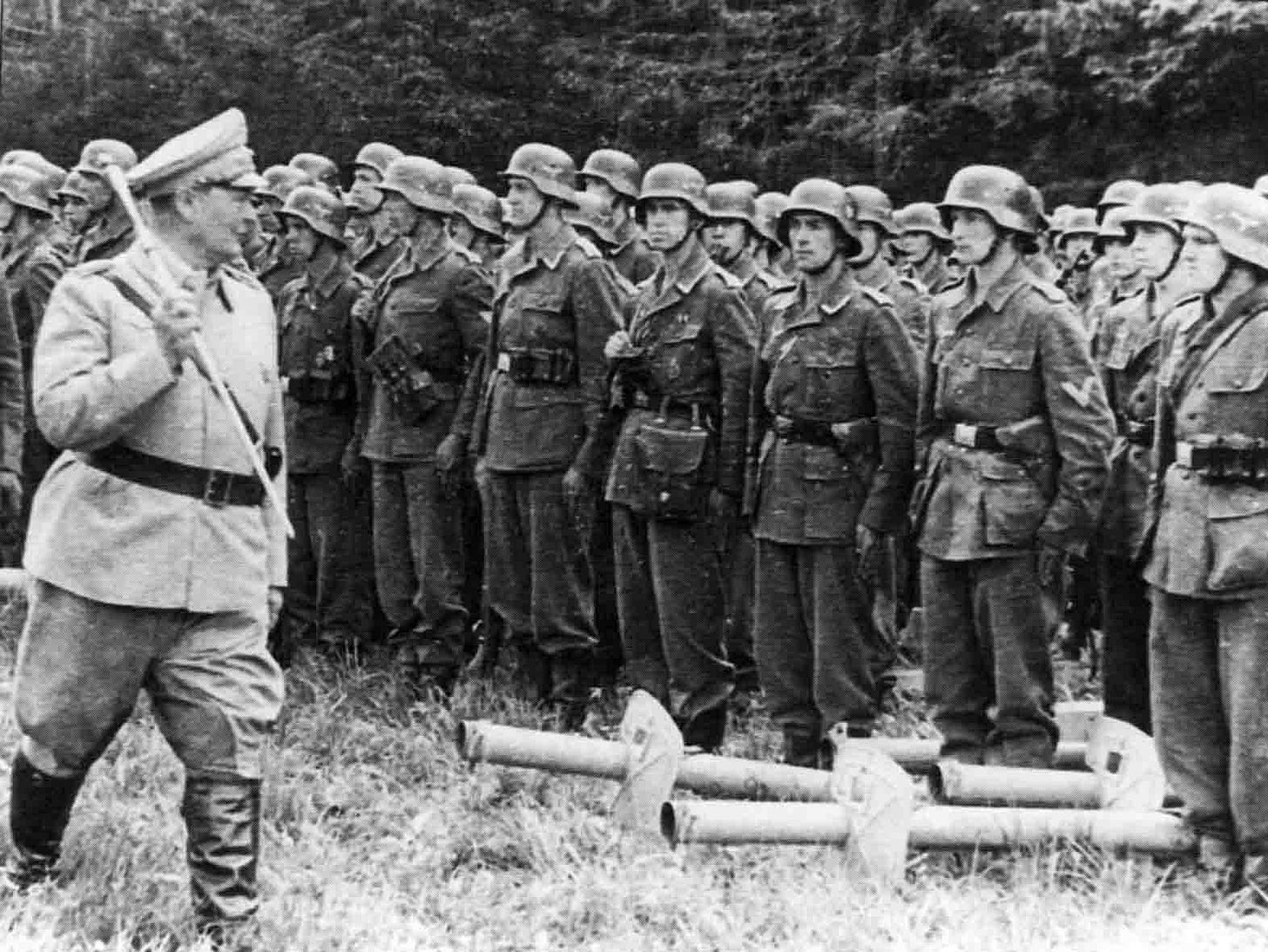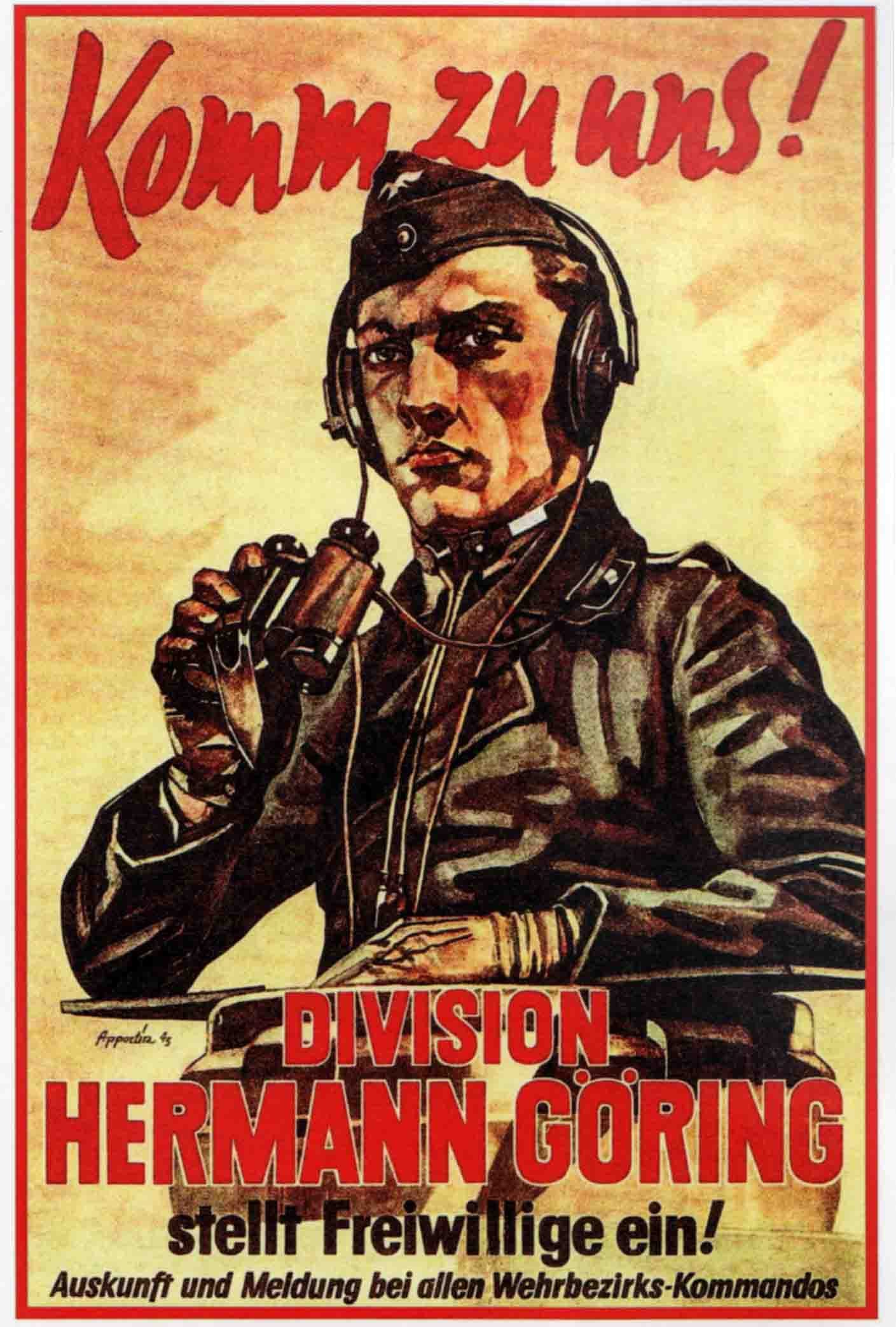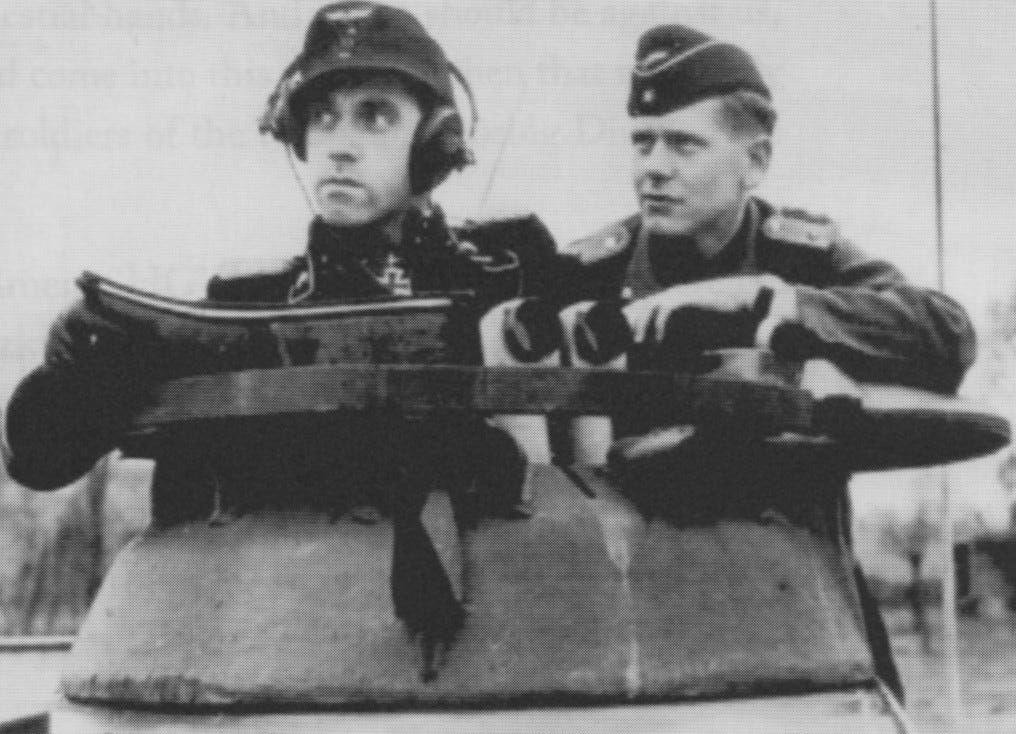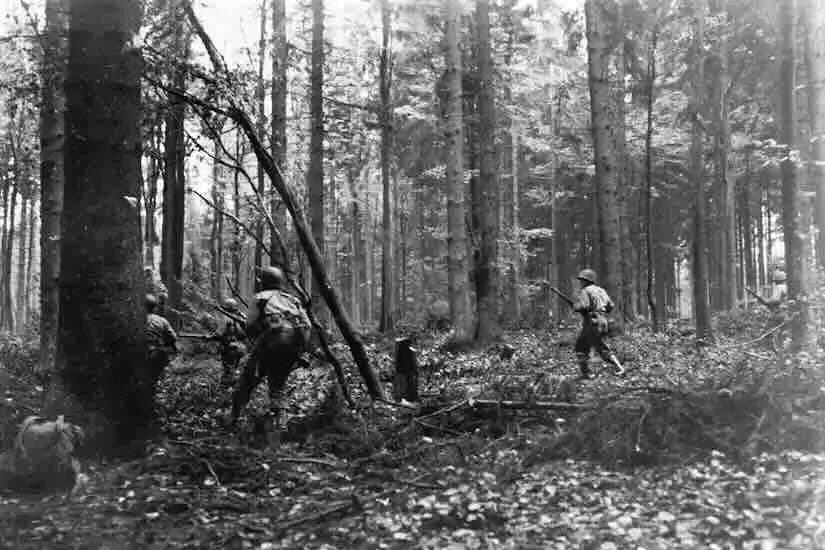Panzer Divison 'Hermann Goring'
How a unique formation within the Nazi military machine defended East Prussia in late 1944
Unusual structures and lines of responsibility characterised the Nazi military order, with a sharp divide between the Waffen SS and the conventional Wehrmacht. The Fallschirm Panzer Divison 'Hermann Goring' falls into a third category. This was a tank division ( later Corps) that belonged to the Air Force, with a distinct identity and aspirations to be an elite fighting force like the SS - but it mostly fell under Wehrmacht command. The pet project of Herman Goring, its origins was as a police ‘guard’ unit, similar to elements of the SS. It never grew to have the same independence and capabilities, and Goring’s patronage was actually quite remote.
Fallschirm-Panzer-Division 'Hermann Göring’: A History of the Luftwaffe's Only Armoured Division, 1933-1945, first published in 2021, carefully traces the various deployments and chequered history of this unit. After being decimated in Tunisia, after a futile attempt to reinforce failure, it was rebuilt and fought in Sicily and Italy. By October 1944, it was a highly motivated and robust unit that could contribute to Germany's defence in the East. It played a crucial role in delaying the inevitable when one and a half million Red Army soldiers began a new offensive under General Chernyakhovsky:
The first ‘Hermann Goring’ units deployed south of Gumbinnen on the western banks of the Rominte River; Chernyakhovsky's offensive opened with powerful aerial and artillery bombardment on 16 October. Subordinated to General der Infanterie Friedrich Hossbach’s Fourth Army, Fallschirm-Panzerkorps ‘Hermann Goring’ elements went immediately into action, crashing headlong into the northern flank of the Soviet 11th Guards Army between Angerapp and Nemmersdorf.
The Soviet advance had been slowed by Volkssturm units, Hitler having ordered the entire male population of East Prussia between the ages of 16 and 60 mobilised, many equipped with nothing more than Panzerfaust anti-tank projectiles and antiquated Russian or Italian rifles, though given crucial support by heavy flak weapons of the 18th Flak Division.
The ‘Hermann Goring’ armour was key to halting the Soviet advance, among it Hans Sandrock’s Jagdpanzer IV tank destroyers of Fallschirm- Sturmgeschiitz Battalion 2 ‘Hermann Goring. During the heavy fighting in East Prussia, Sandrock’s unit tallied a total of 123 enemy tanks and armoured vehicles destroyed. Sandrock was promoted to Major on 18 October and awarded the Knight’s Cross that same day; the medal — and a Luftwaffe Honour plate (jErhenschale) which had been awarded on 29 September — were both presented to Sandrock by General der Artillerie Weidling, commander of XLI Panzer Corps.
Both ‘Hermann Goring’ divisions and the 5th Panzer Division drove desperately into the Soviet northern flank aiming for Grosswaltersdorf, while from the south and the direction of the Rominte Heath, the still forming armoured Fiuhrer Grenadier Brigade from Hitler’s escort unit pushed north in fierce close-quarter combat. The ferocity of the fighting is evidenced by Feldwebel Fritz Bowitz of the Panzer Regiment’s 4th Company who destroyed thirteen Soviet tanks with his Panther during a single day.
On 21 October, Soviet troops captured an intact concrete bridge over the steep-sided Angerapp River and seized Nemmersdorf, fighting raging for hours before the Soviets were slowly forced back in confusion after violent German counter-attacks, spearheaded by ‘Hermann Goring’ Panzers. In the devastated town German troops discovered the grisly remains of raped and murdered civilians, providing a macabre boost to Goebbels’s propaganda machine as it announced the fate awaiting German civilians at the hands of a vengeful Red Army.
The two German pincers from north and south established contact on 23 October near Gross Tellrode. For nearly fourteen days the Wehrmacht battled Chernyakhovsky’s troops who stubbornly tried to continue their frontal westward advance before being halted and repulsed. During the first four days of fighting, Fallschirm-Panzer-Division 1 ‘Hermann Goring’ alone recorded the destruction of 99 tanks and 43 Soviet anti-tank units. However, it too suffered considerable casualties, including the commander of 1st Battalion, Fallschirm-Panzer Regt. ‘HG’, Hptm. Joachim Renz, killed on 23 October as his tanks moved up to engage the enemy.
Oberleutnant Gerhard Tschierschwitz’s 2nd Company of Panthers continued the assault despite their battalion commander’s death and broke through the flank of advancing Red Army forces and reached the village of Jagershagen, 7 km southwest ofTrakehnen. There he surprised a Red Army command post and troop assembly area, before continuing a roaming attack Panzer Corps behind the Soviet front line, without any infantry support, and destroying 16 tanks, 16 anti-tank guns, 6 artillery pieces and 13 machine guns as well as killing an estimated 300 Soviet soldiers. Finally, after a circuitous route allowed his unit to re-establish contact with German infantry, the company withdrew; Tschierschwitz received the Knight’s Cross for this action on 6 December.
"Three days later, Wallhaussers tank destroyers locked horns with a major Russian tank force and were able to drive it back to its starting line, collecting German stragglers along the way to provide infantry cover to his armoured vehicles. When a neighbouring unit was forced to retreat, Wallhausser attacked the Russians’ flank, recapturing the position and inflicting heavy casualties, destroying several tanks and self-propelled guns and blunting the attempted Soviet advance on Gumbinnen. Wallhauser was also later awarded the Knight’s Cross for this action on 30 November; one of six such awards granted that same day.
In another sector of the ‘Hermann Going’ advance, a diminutive eighteen-year-old, Gefreiter Albert Plapper, squad leader in 4th Company, Fallschirm-Panzergrenadier Regt. 2 ‘HG’ commandeered a captured Russian machine gun and opened fire on enemy troops, managing to stop an infantry attack in its tracks. When T-34 tanks were called up for support, Plapper attacked and destroyed five of them using a Panzerschreck before gathering his men and counter-attacking to stabilise the German line. He too was awarded the Knight’s Cross.
To bolster its anti-tank capability, the formidable Tiger II tanks of Schwere Bataillon 505 were attached to the Fallschirm-Panzerkorps on 28 October and ordered to assemble south of Altkrug. At the beginning of November they were briefly reassigned, this time to Fallschirm-Panzer-Grenadier-Division 2 ‘Hermann Goring’, before moving on once more to the control of the Fuhrer Begleit Brigade.

Goring himself visited the division during this period, dressed in the uniform of a ground force commander and meeting Schmalz at his headquarters at Gut Austinshof near Nemmersdorf. Around this period, while attending conferences at the nearby ‘Wolfsschanze’ Fuhrer headquarters, Goring took the opportunity to stay at his Reichsjagerhof, hunting on the Rominte Heath for one last time.
Following his departure, on 20 October the codeword ‘Johannisfeuer’ was sent to the guard detachment. To prevent the lodge falling intact into enemy hands, thirteen fires were set at pre determined locations within the main and outbuildings and the grand hunting lodge was destroyed; its guard detachment returned to the main body of the ‘Hermann Goring’ Corps.
Defeated by the German defence, the Red Army pulled back to rest and refit for fresh offensives in the new year. Losses on both sides had been extremely heavy, for example the Sturm Bataillon Fallschirm-Panzerkorps ‘HG’ which had started the battle with a strength of 974 men had lost 11 officers, 107 NCOs and 488 enlisted men between 10 September and 31 December 1944, including commander Hans-Georg Lehmann, posted missing in action.
While Necker’s division was pulled back into XXXV Army Corps reserve to refit, Walther’s Fallschirm-Panzergrenadier-Division 2 ‘Hermann Goring’ remained in the front line, dug-in in extensive trench networks reminiscent of the First World War as snipers prowled both sides of the line. Each trench was dug to a depth of between two and two and a half metres, with a maximum width of one and a half metres. At intervals in the trench walls, holes were dug for up to three men to sleep and shelter from the winter rains that turned the battlefield and no-man’s land between German and Soviet positions into a quagmire of mud before solidifying as the first snow of winter 1944/45 fell in East Prussia.
© Lawrence Paterson 2021, 'Fallschirm-Panzer-Division 'Hermann Göring’: A History of the Luftwaffe's Only Armoured Division, 1933-1945'. Reproduced courtesy of Pen & Sword Publishers Ltd
Affiliate Links
Recently on World War II Today ...
Street warfare in Aachen
Unfortunately, that was not all. Terrible things happened: Three Americans came to search the house for German soldiers. They were most friendly and polite. The commanding officer, a young, handsome, adorable boy… Yes, I was young! And then the unthinkable: they combed through the house and the factory… but they did not find anything, of course. The situation eased. They stayed for a while to discuss the situation. The officer stood at the window, talked to his fellow, took off his helmet and lighted a cigarette. Our eyes glued to his face. Then a shot was fired …
Into the woods in Germany
My platoon had just begun to dig in when we were suddenly attacked by about forty Germans, who ran at us shooting, taking cover behind trees as they moved in. We instantly dropped our shovels, lay down in the shallow beginnings of our foxholes, and fired back with all we had.
All they seemed to have were single-shot, bolt-action rifles, and these quickly proved no match for the volleys of our Browning Automatic rifles (BARS) and semiautomatic M-1s. The Krauts were stopped about seventy five yards in front of us. They probably came upon us by accident, and they didn’t seem organized. It now looked as though they might be regrouping to continue the attack, so I called for artillery.






